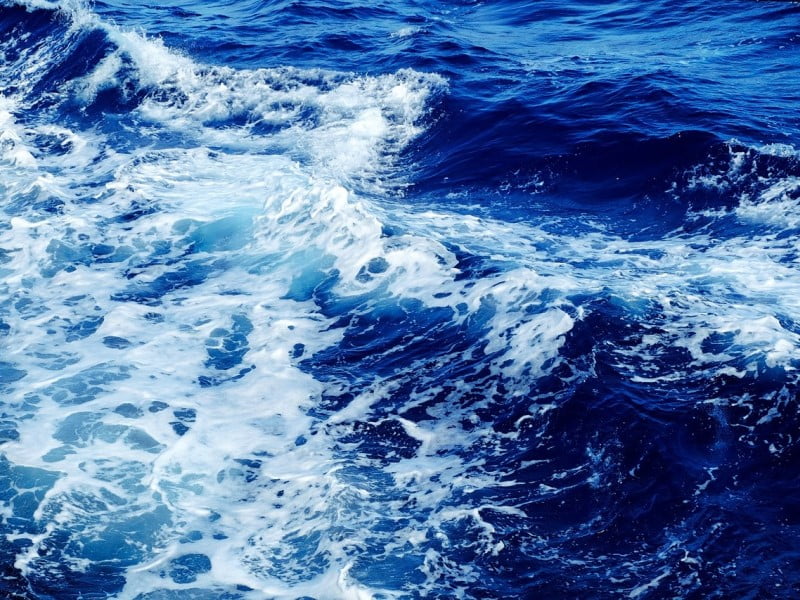Natural seawater could feasibly be an “almost infinite” feedstock for green hydrogen following a research breakthrough led by scientists at the University of Adelaide.
The team used a catalyst coating which allows hydrogen to be extracted from seawater using existing commercial electrolysers. They are now working to scale the system to use in “commercial processes such as hydrogen generation for fuel cells and ammonia synthesis,” according to the university.
Co-author and School of Chemical Engineering Associate Professor Yao Zheng said the research team, which included academics based at Chinese and American universities, was able to “split natural seawater with nearly 100 per cent efficiency, to produce green hydrogen by electrolysis”.

In particular, the researchers demonstrated similar performance to the electrolysis of high-purity water using a typical [proton exchange membrane (PEM)] electrolyser.
“It is always necessary to treat impure water to a level of water purity for conventional electrolysers, including desalination and deionisation, which increases the operation and maintenance cost of the processes,” said Associate Professor Zheng.
“Our work provides a solution to directly utilise seawater without pre-treatment systems and alkali addition, which shows similar performance as that of existing metal-based mature pure water electrolyser.”
The catalyst and Lewis acid coating used in the research was described by co-author and UniAdelaide chair of nanotechnology Professor Shi-Zhang Qiao as “non-precious and cheap”. A chromium oxide coated cobalt oxide catalyst was used in the published research.
Published in Nature at the start of January, the journal article notes that seawater electrolysis could help avoid creating a shortage of freshwater.
“If water electrolysis is used to produce the vast majority of the world’s energy in the near future, water distribution and resource shortage issues may arise. Seawater, by contrast, accounts for 96.5 per cent of the earth’s water reserves, which is an almost infinite resource and a natural electrolyte feedstock,” the article reads.
“However, direct seawater splitting is still in its infancy because of the complexity of natural seawater.”
Several challenges in the electrolysis of natural seawater had restricted development in the field. These include low efficiency and poor stability of the electrolysis process under near pH-neutral conditions, the presence of corrosive ions also present in seawater, and higher energy requirements for electrolysis.
As such, to successfully electrolyse seawater, it must be desalinated and a strong alkali must be added. Potassium hydroxide, which costs US$800 (AU$1110) per tonne, is cited as an example in the article.
Last year, Wollongong University spin-out Hysata published research into the use of an alkaline capillary-fed electrolysis cell that exceeded the performance of commercial PEM and alkaline electrolysers.
Hysata chief executive Paul Barrett said at the time that its technology would enable the production of hydrogen at a cost below the stretch goal of $2 per kilogram set by the previous Coalition government.
Climate Change and Energy minister Chris Bowen said last Friday that the federal government is “dedicated to green hydrogen” and that it would be “focusing all our efforts on green hydrogen” despite ongoing interest in blue hydrogen production – hydrogen produced from methane at facilities fitted with carbon capture and storage technology.
Do you know more? Contact James Riley via Email.


Interesting, Pat. Where do your various figures come from, such as the unsustainable 44 kW expended to make 33-34 kW?
Hi Tony
I found these websites discussed a number of segments to the topic….
If my terminology is incorrect please forgive me….
A US expert estimates in theory it will cost $16 to produce a kg of hydrogen in one of the links above [links deleted – editor].
Every country seems to have interest groups wanting taxpayers to fund infrastructure and pretending jobs are created….technology is replacing units of labour in every workplace so this is a diminishing argument.
From my limited reading and very limited knowledge it seems Hydrogen is a very expensive fuel and because of its density in its pure form it will require all pipes freight and storage facilities that are presently used to be replaced.
My interest arose when Germany and Japan started to invest into Australia seeking contractual relationships for long term supply and suddenly the Politicians started to get excited. Why would these countries do this?
The QLD Government which is against new dams is preparing to build a new dam to provide water for electrolysis to generate hydrogen , State and Federal Governments have their colourful strategy brochures prepared and at $5-$7 per kilogram (the LNP Govt said it will eventually cost, not sales price, $2 to produce 1 kg of hydrogen which seems nonsense), a formula that requires 9 litres of water per kg of hydrogen to be green (obviously new dams or desal plants required) and 3.5-4 times more hydrogen than the amount of natural gas to generate similar energy it seems to be a $Billionaires playground and Politicians and bureaucrats are writing cheques for unpaid wealth transfers to these $Billionaires the good old penniless Aussie taxpayers can’t cash.
Will Paul Barrett resign if the kilogram of hydrogen costs more than $2 to produce?
If not he can mouth off till the cows come home because there is not a company in the world that will manufacture green hydrogen for $2kg let alone sell it for $2kg…it will be closer to $5-7kg.
Green hydrogen is a figment of someone such as a Politician who will use taxpayer money to pay for infrastructure for companies that will manufacture using taxpayer subsidies…it is a totally unsustainable business model….why is nobody asking….doesn’t it take around 3.5-4kgs of hydrogen to generate the temperatures in manufacturing that a kg of natural gas takes?
Using electrolysis takes 44 kilowatts of energy to make 1kg of hydrogen (from 9 litres of water) and this 1kg generates 33-34 kilowatts of energy.
So where are the companies will to pay for goods manufactured goods using hydrogen?